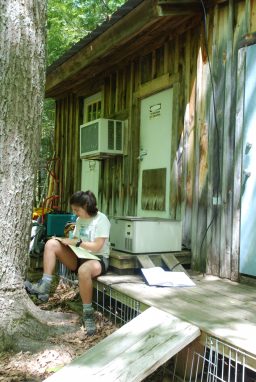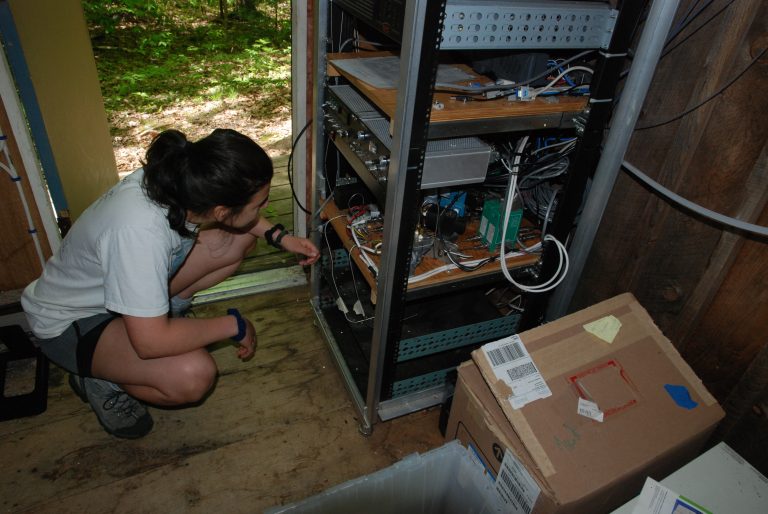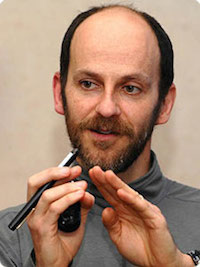Looking for the Effects of Climate Change in One Forest
By Tom Porter
Rising junior Diana Grandas has been doing some important field work over the summer—or to be accurate, forest work. As a Burns summer fellow she’s been on the front lines of a long-running Bowdoin project to measure the effects of the changing climate on Harvard Forest—a 3,000-acre ecological research facility in Massachusetts owned by Harvard University.
Under the guidance of Associate Professor of Physics Mark Battle, Grandas is working on a project going back fourteen years to measure carbon dioxide and oxygen levels in the forest’s atmosphere. The math and physics double major is among the more than 200 students who have institutional fellowships from Bowdoin this summer. The majority allow students to devote themselves to research that will lay the foundation for senior-year honors projects.
Grandas describes in her own words the work she’s been doing.
I am working on a project characterizing the ratio of oxygen consumed to carbon dioxide produced in the local biosphere in Harvard Forest. To accomplish this, we have a system that collects air from the forest and runs it through O2 and CO2 analyzers, which make differential measurements against an air stream with known concentrations of O2 and CO2. This project has been in the works since 2004, with many student researchers working on it through the years. Data were collected from 2006 to 2013, when the system was shut down. Now, five years later, we want to get the system up and running again, and hopefully be able to see how climate change and warming in the forest has changed the ratio of oxygen to carbon dioxide.
My work is focused on two main goals: rehabilitating the hardware of the system, and implementing a correction factor to existing data to decrease uncertainty. Aside from the two commercial analyzers for oxygen and carbon dioxide, much of the system is made up of components that remove water vapor from the air and keep flows and pressure as constant as possible. If water is in the air, the readings from the analyzers could be skewed. Keeping pressure and flow constant is similarly important, especially in the O2 analyzer. As pressure increases, total air volume increases, and the O2 analyzer registers a greater O2 abundance. However, if the analyzer knows the pressure in the cell, it can correct for any change above or below a standard.

This brings me to my second goal: the correction factor I mentioned. The O2 analyzer measures oxygen concentration through two side-by-side fuel cells, in which two different air streams are flowing. Currently, the analyzer is set up so that pressure is read in one cell for forty-eight seconds, then switched to read the other one. So, if the cell the pressure is being read from has higher pressure than the other, the analyzer will overcorrect the opposite cell’s O2 reading.
I am writing code so that for each second that passes, we look forward or back in time to find the pressure the opposite cell would most likely have been. With both pressure values, I can correct the previously overcorrected O2 readout, decreasing uncertainty in our measurements.
Just last week, we finished up the hardware and redeployed the system at Harvard Forest. Hopefully, we’ll be able to see if the O2:CO2 ratio has changed in the last five years and compare it to the warming of the planet.
So far, I have enjoyed learning what goes on behind the scenes of experimental science: the instrument design, the grunt work of installation, troubleshooting the equipment, and developing software to process the data. It is also incredible to work on a project so many other students have worked on. My work has drawn from the work of all these previous students, and I’ve referenced lab notebooks from 2004 until now.

Associate Professor of Physics Mark Battle.
"Diana’s contributions advanced my research program immeasurably. In eight weeks she covered a tremendous amount of ground."